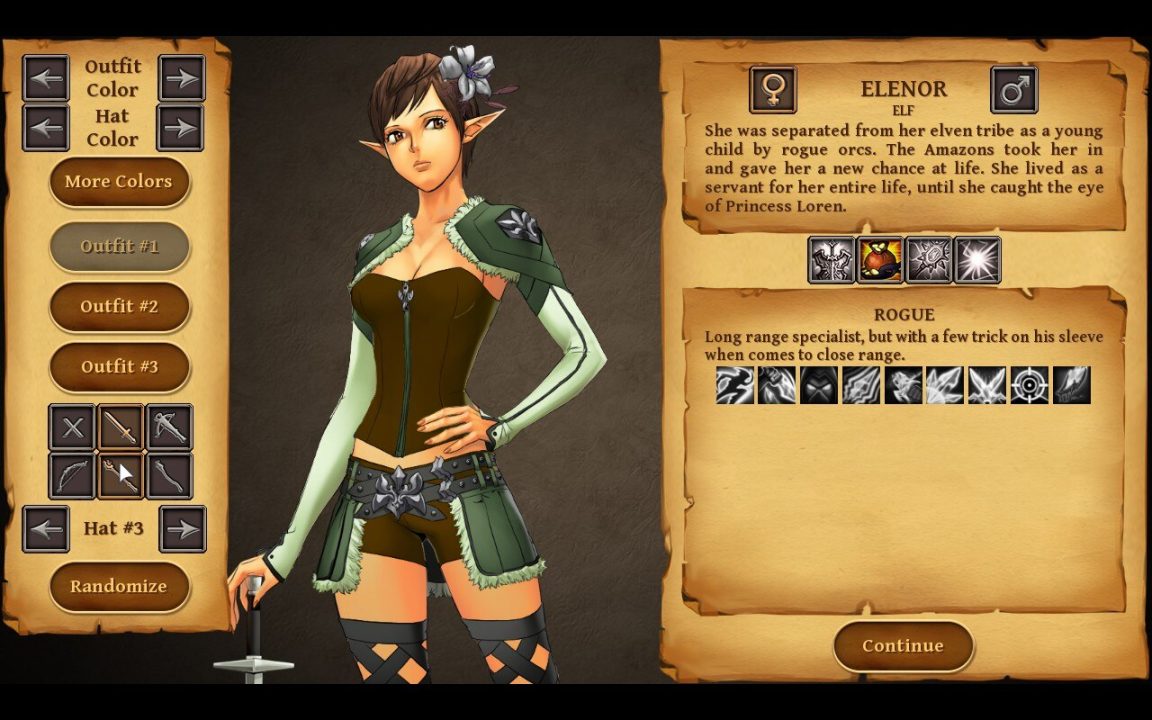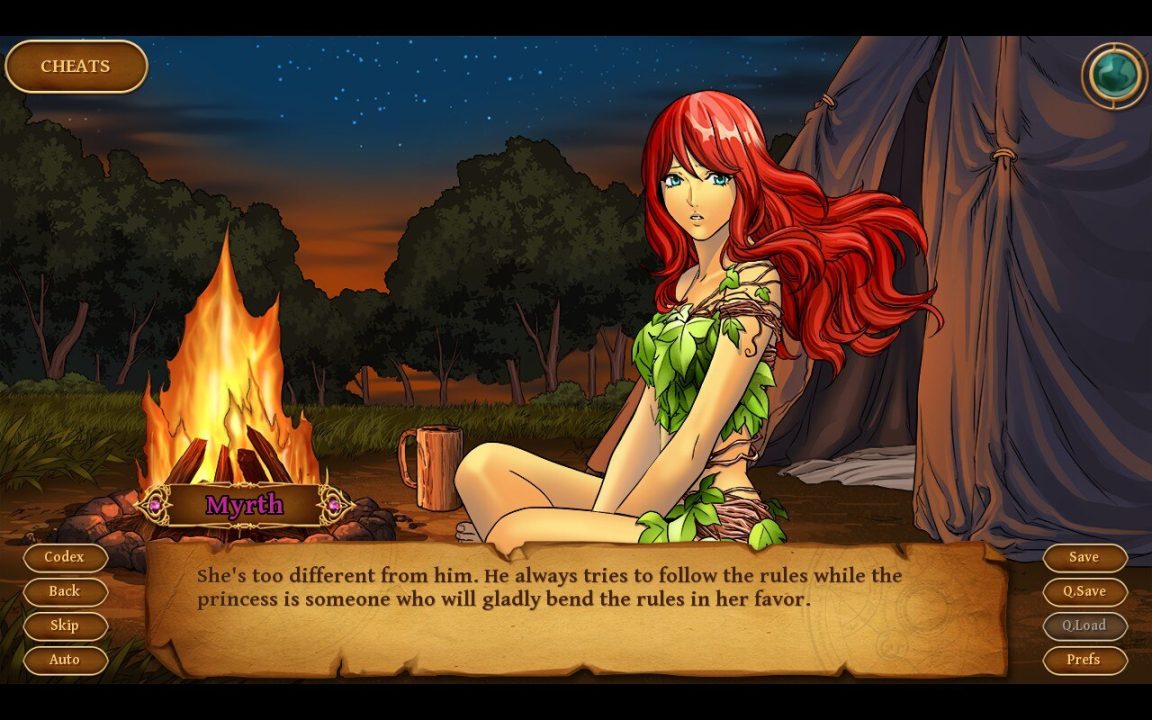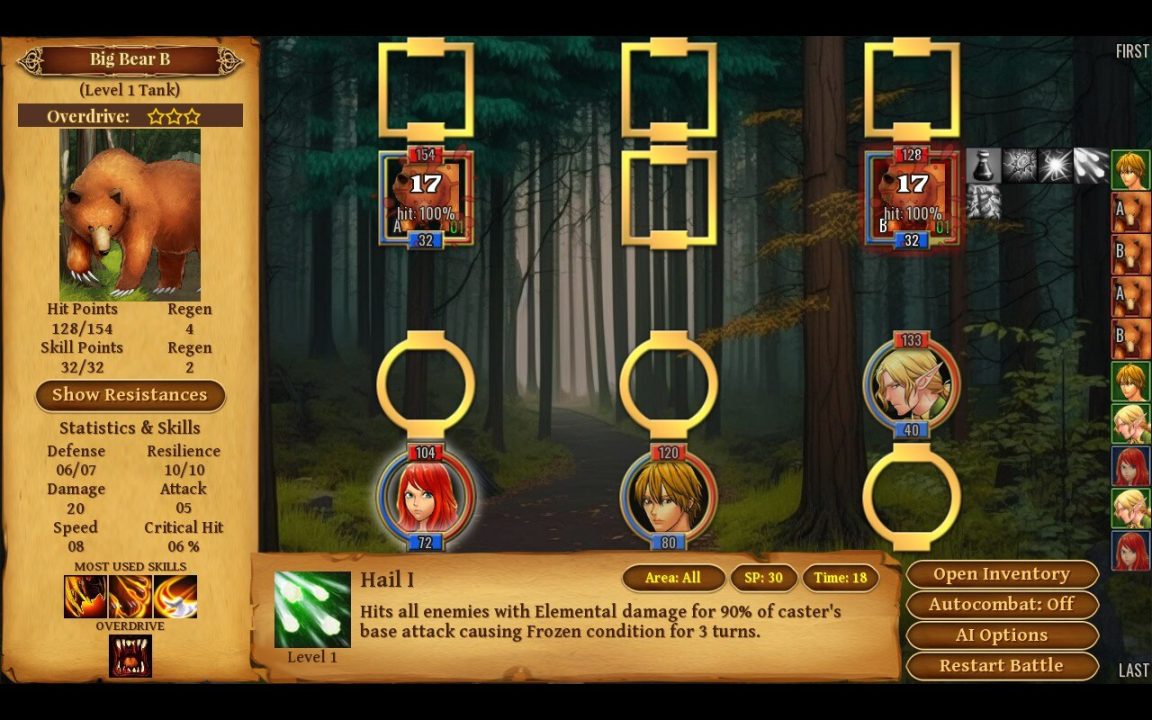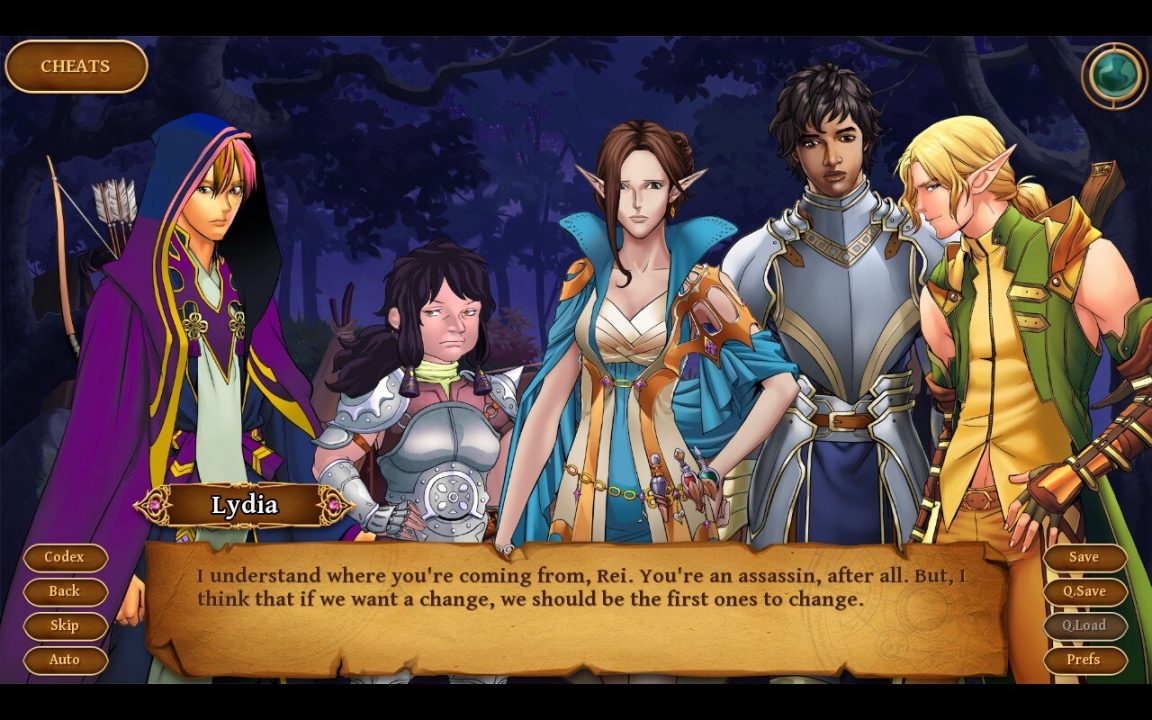My first foray into Winter Wolves’ fantasy realm of Aravorn was the Kindle mobile version of Loren the Amazon Princess. I was pleasantly surprised by Loren, a choice-heavy narrative highlighting some of the best elements of both visual novels and traditional RPGs. It isn’t an entirely flawless gaming experience, but I enjoyed it enough to not only replay the title numerous times but also to try several other high-quality indie games with the Aravorn setting. Now, Loren the Amazon Princess is finally getting proper spin-off sequels in the same vein as the VN/RPG hybrid itself. The first of these four planned games is Tales of Aravorn: An Elven Marriage. Does this first sequel, telling a more precise tale on the surface, capture the same charm and appeal of its predecessor? Or does it fall flat in comparison by retreading similar themes? Overall, I was surprised by the level of storytelling depth I eventually found in Tales of Aravorn: An Elven Marriage, so much so that I eagerly anticipate the other planned sequels!
Tales of Aravorn: An Elven Marriage starts a few years after the defeat of the dreaded Death Knight Fost at the end of Loren the Amazon Princess. The land has finally reached a period of stability, with both the elven settlement of Grandtree and the capital of the human-based Empire of Grimoire willing to interact without open hostility. Within the Amazon-controlled lands of the Citadel ruled over by Loren, the new queen, there’s fierce opposition to her edicts like abolishing slavery, but they’re still getting readily implemented.
During this change and growth, a new mission begins for the human Saren or the elf Elenor, former Amazon-enslaved people who played an integral part in the battle against Fost. Their former comrade, the highly accomplished human wizard Apolimesho, requests their assistance along with the Elder Druid Myrth and her adopted brother Rei of Grandtree. They’re to escort the recently elected moon elf Princess Lydia to her marriage with Marian, a highly accomplished human leader of the land of Paqwana. As human and elven relations are still tenuous at best, the marriage has significant symbolic and political ramifications. Dangerous elements lurk in the shadows of the looming nuptials since not everyone wants the marriage to succeed. Some of these are more demonic, while others are closer to home. Can Saren or Elenor, along with their companions, help the marriage go off without a hitch. Or will they be swept up in turmoil caused by political machinations?
When starting up Tales of Aravorn: An Elven Marriage, you pick between Saren or Elenor and see the story play out from the perspective of the character you choose. A surprisingly detailed character customization screen awaits you after picking between the two protagonists, allowing you to choose which job class you’d like to be and even which outfit and color scheme you’d like your chosen character to have. For my first playthrough, I opted for a mage Saren with a more traditional magic-using garb. However, the variety of attire choices is an impressive cosmetic feature, if nothing else. And, yes, in true Aravorn fashion, you can opt for fanservice clothing if that’s your preference. You then get to choose how to approach relationship-building within your particular playthrough. In An Elven Marriage, you can carry over romances between Saren and Myrth or Elenor and Rei from Loren the Amazon Princess, you can opt to roleplay having been in a romance with a character not featured in this game, or you can start fresh with no prerequisite romances. The third option opens the door for Saren or Elenor to potentially romance the moon elf alchemist Lydia or her dutiful bodyguard, a former Knight-Priest of Paqwana named Nathir. As one can easily surmise, romance and relationship-building play crucial roles in how the narrative ultimately plays out. In my first playthrough, I opted to have Saren become involved in a romantic relationship with Nathir, and during my second one, Elenor and Rei remained in a committed relationship. Both approaches are written and conveyed exceptionally well, especially if you manage to increase your intended paramour’s affection to their highest levels.
Aside from the focus on romance, friendships and alliances also play a critical narrative role. The active battle party comprises five other characters besides Saren or Elenor: kind-hearted Myrth, pragmatic assassin Rei, loyal Nathir, determined Lydia, and earnest battlemage Gruff. Depending on your responses in the storyline or your camp conversations, you can either positively or negatively affect their relationship values. Higher relationship values increase the likelihood of gaining access to their character quests, providing further story insight into a character while granting you a boon as a valuable item for them. I can’t help but play Saren as a dorky, naive character thanks to my Loren the Amazon Princess playthroughs, endearing me to four of my party companions but costing me access to Rei’s character quest in my first playthrough as he never quite saw eye-to-eye with my Saren. You also have relationship values with the King of Triberg and his nemesis, Lamia. Depending on how you raise their levels, you gain different ways to settle matters between them. Likewise, while they don’t have relationship values per se, how you respond to different choices will have characters such as Apolimesho and General Ashtran react differently to you.
Tales of Aravorn: An Elven Marriage is a very choice-heavy game. Outside of battle preparation and fighting, you advance the plot much like in a traditional VN, eventually reaching a decision point that has some consequence on how the rest of the plot plays out. Sometimes, a choice’s impact is immediate, while other times, it might take a while to see how a decision will affect things. I credit the game for constantly using choice to evolve the outcomes of its branching narrative.
Battles play out like in any traditional turn-based RPG, and it’s easy enough to get the hang of combat. Your party members and the enemy take turns in order, with you deciding on the action you want to take by hovering over a character’s portrait on the fight screen and deciding from readily available options. Leveling up after fights and completing quests allows you to boost character stats, and you use skill points to gain access to new abilities or level up ones already acquired. You can level grind in random encounters at various towns and cities, allowing you to get money for upgrading gear and buying items in stores. Fighting the encounters in towns also helps increase your reputation in that area, earning access to discounts and even optional scenes and side quests depending on how high you raise it. Because Lydia is an accomplished alchemist, you also have access to crafting, a skill that lets you strengthen armor or create new items such as healing potions. Just be sure to gather ingredients when given the option, as you can create some powerful items as you advance in the game.
The RPG and VN mechanics blend well in Tales of Aravorn: An Elven Marriage and the overall gameplay is exceptionally solid. The writing and the character development are where the title truly shines. What appears to be a smaller narrative scale than what Loren the Amazon Princess set out to do ultimately evolves at the halfway point in unexpectedly fascinating ways, setting the stage for the subsequent three planned side-story sequels. Returning characters such as Apolimesho, Breza, Rei, and Myrth have compelling story scenes and arcs, though perhaps the most interesting returning character evolutions are the antagonistic succubus Jul, thanks to her observations of the party, and General Ashtran, given how he’s developed since his role as a more helpful ally in Loren the Amazon Princess. References and cameos abound, not only to Loren the Amazon Princess but also to other Aravorn-based storylines such as Tales of Aravorn: Seasons of the Wolf, Tales of Aravorn: Cursed Lands, and Queen of Thieves. Newcomers such as Gruff, Nathir, and Lydia are also written exponentially well. I adore Gruff’s earnest nature and their desire to make something of themself as the new dwarven Envoy of Grimoire. Nathir gets some surprising character reveals, and I adore the evolution of his romance with Saren in particular. Lydia is a captivating character with many standout moments throughout the script. Lamia is also a fascinating plot presence, especially if you side more with her than the King of Triberg. Like Loren the Amazon Princess, this is a game I have no problem replaying because so much of the storyline is surprisingly detailed and full of depth. You can even play the game entirely in Visual Novel Mode to speed up playthroughs!
In terms of visuals, more than one artist worked on this game. The artwork is highly detailed and gorgeous, with expressive character portraits that try to appear cohesive. However, there’s still a noticeable difference in how some characters are designed. Various composers are also responsible for the game’s music, but it sounds surprisingly uniform, with tremendous tension-building and emotional tracks. I particularly love the central vocal theme detailing the story of the moon elves sung at the wedding ceremony. The game’s sound effects are fitting, and I like the sound bites used for party members during battle. The script work does have some typographical errors, but that doesn’t detract from the overall storytelling, thanks to how easily they can be overlooked and the sheer size of the script.
I initially came into Tales of Aravorn: An Elven Marriage unsure what to expect. What I discovered is a worthy successor to Loren the Amazon Princess that sets the stage for even more fascinating and harrowing events set in the world of Aravorn. VN/RPG hybrid fans who enjoy both choice-heavy narratives and solid gameplay will find much to enjoy in this title, especially those with prior knowledge of the Aravorn game universe as a whole. Tales of Aravorn: An Elven Marriage is an engaging and largely self-contained tale, and thanks to it, I’m now eagerly anticipating what’s to come next!






